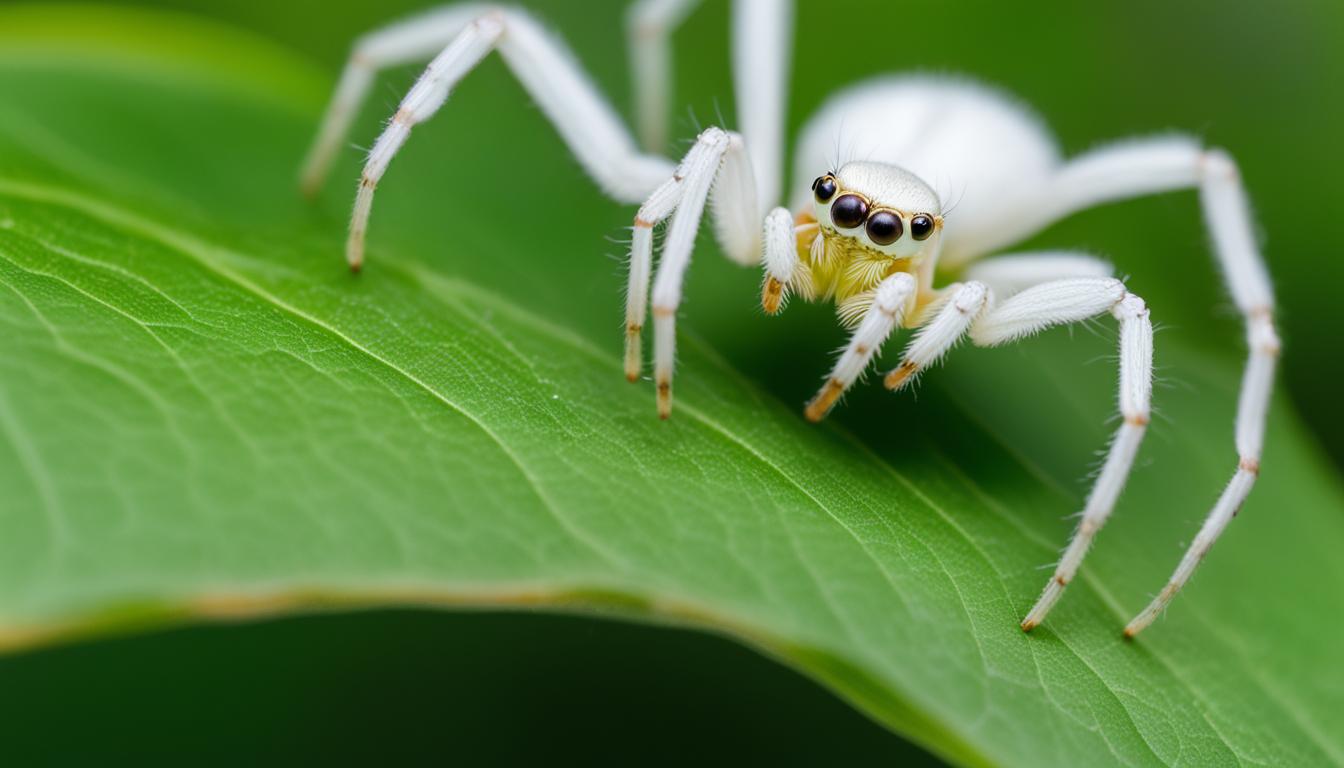Have you ever caught a glimpse of a white spider and wondered what it might signify? While spiders are often associated with fear and repulsion, they also hold significance in various cultures as symbols of luck and prosperity. In this article, we take a closer look at white spiders and explore their potential connection to good fortune.
Before we dive into the specific symbolism of white spiders, it’s important to understand the broader context of spider superstitions and folklore. Spiders have a rich history of cultural significance, appearing in myths and legends around the world.
White spiders, in particular, have been noted for their unique coloration and potential spiritual significance. From Native American beliefs to European folklore, white spiders have been associated with various meanings and interpretations.
Key Takeaways:
- White spiders hold symbolic meaning in different cultures and spiritual practices.
- Spider superstitions and beliefs have existed for centuries in various traditions and societies.
- White spider symbolism has been influenced by myths and legends.
- Despite their potential association with good luck, white spiders can also evoke fear and anxiety in some individuals.
- White spiders continue to capture the imagination and appear in modern literature, art, and media.
Spider Superstitions and Folklore
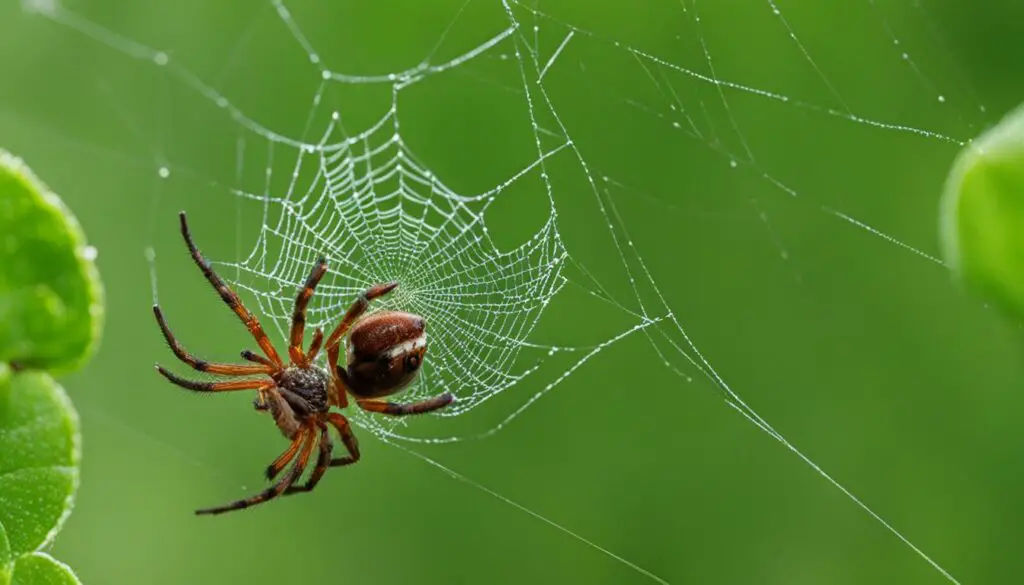
Spiders have long been associated with superstitions and folklore, both positive and negative. In many cultures, spiders are viewed as mystical creatures that possess powerful symbolism and spiritual qualities.
In some traditions, spider webs are considered protective talismans that can ward off evil spirits. Other beliefs suggest that spiders bring good luck or wealth when they appear in the home. On the other hand, many superstitions paint spiders as harbingers of danger, disease, and even death, with various cultures associating spiders with dark forces and malevolence.
White spiders, in particular, have been regarded with varying levels of superstition throughout history. For instance, some Native American tribes believe that white spiders bring good luck and blessings from the Creator, while others see them as omens of misfortune.
Spider Superstitions in Folklore
The idea of spiders as mysterious, magical beings is prevalent in many myths and legends around the world. In Greek mythology, the goddess Athena transforms Arachne, a human weaver, into the first spider after she defies the gods. In some African folklore, Anansi the Spider is a trickster figure who outwits his enemies with cunning and wit.
Spiders are also common motifs in literature and art, with their complex webs and movements inspiring creative minds for centuries. Perhaps the most famous spider in Western literature is Charlotte, the titular character in E.B. White’s classic children’s novel, “Charlotte’s Web.”
“Some Native American tribes believe that white spiders bring good luck and blessings from the Creator, while others see them as omens of misfortune.”
While spider superstitions and folklore may vary across cultures and time periods, they all speak to the enduring mystique of these fascinating creatures.
Symbolism of White Spiders
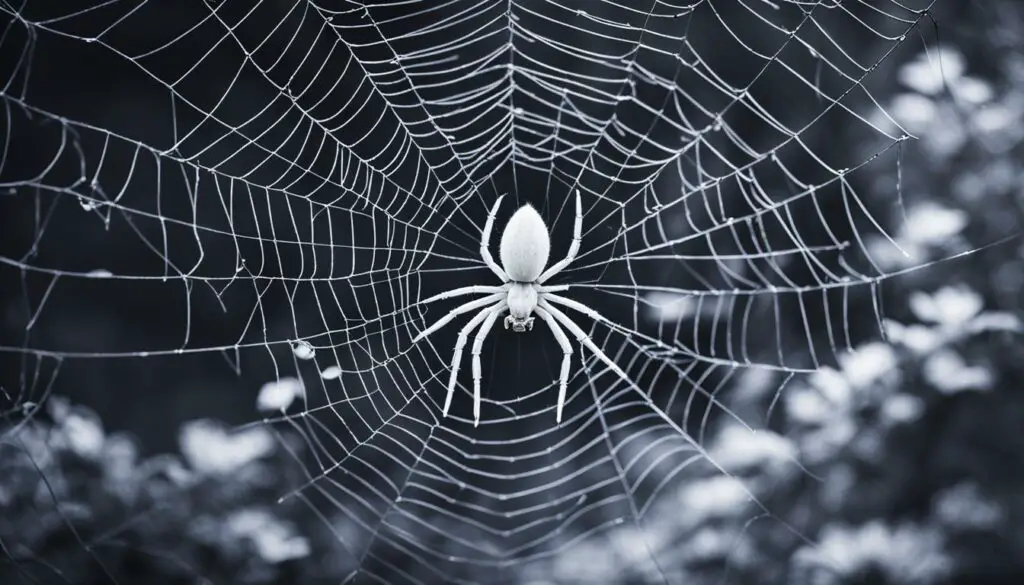
White spiders have been associated with various symbolic meanings throughout history, often differing according to culture and spiritual practices. The meaning of white spiders can vary from good luck to spirituality and even death.
In some cultures, white spiders are viewed as a symbol of purity and spiritual growth. Their white color is often associated with light, goodness, and clarity. In this context, white spiders are seen as a positive sign, indicating a spiritual awakening or a connection to the divine.
On the other hand, in some beliefs, white spiders are considered to be a symbol of death and endings. This symbolism may stem from the spider’s association with the underworld, where it weaves its web and waits for prey. The white color of the spider may be seen as a representation of bones or ghosts, further emphasizing the connection to death.
White Spider Spiritual Meaning
In spiritual practices such as shamanism, white spiders are viewed as spirit animals that offer guidance and protection. According to these beliefs, encountering a white spider in a dream or in real life may signify a spiritual journey or a need for inner reflection and transformation.
| Symbolism | Interpretation |
|---|---|
| Good Luck | In some cultures, white spiders represent good luck and prosperity, offering blessings and positive energy to those who encounter them. |
| Death | For some, the white spider symbolizes death and endings, representing the transition from life to the afterlife. |
| Spiritual Growth | White spiders are often associated with spiritual awakening and growth, indicating a connection to the divine and a journey towards enlightenment. |
Overall, the meaning of white spiders can vary widely depending on the context and culture. While they may be viewed as lucky or auspicious in some traditions, others may interpret their presence as a sign of impending death or change. Ultimately, the significance of white spiders is open to interpretation, and their symbolism remains a subject of curiosity and intrigue.
White Spiders in Mythology
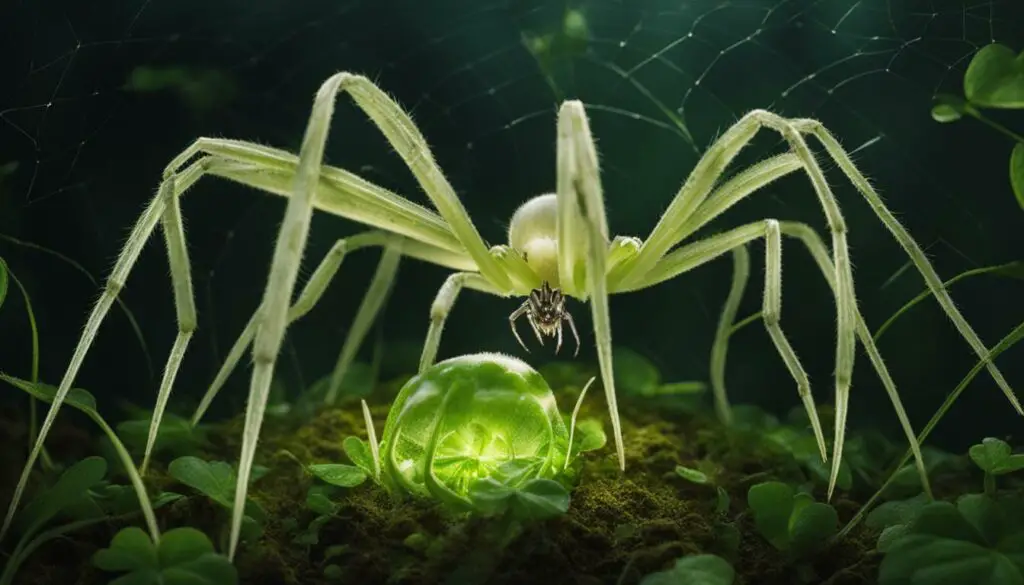
Myths and legends have long featured white spiders as intricate characters or powerful symbols. In Celtic mythology, white spiders were believed to be the souls of departed loved ones, while in African folklore, they were associated with rain and prosperity.
The Greeks also attributed significance to white spiders, as they believed the eight legs of a spider represented the eight branches of magic. Meanwhile, in Native American mythology, the spider was seen as a creative force and a symbol of fertility, weaving the fabric of the universe together with its web.
One of the most famous stories featuring a white spider is the tale of Robert the Bruce, the Scottish king who was defeated in battle and driven into hiding. As he lay in a cave, he watched a white spider attempt to weave a web. Each time the spider’s web failed, it persisted and tried again. Inspired by the spider’s tenacity, Robert the Bruce emerged from hiding and went on to win a decisive victory, becoming one of Scotland’s greatest heroes.
In many cultures, white spiders are considered to be lucky omens, bringing good fortune to those who encounter them. In some European traditions, it is said that seeing a white spider in the morning will bring good luck for the rest of the day.
The Myth of the Lucky White Spider
“If a spider drops onto your clothes, it is a sign of good luck, so don’t kill it, or you’ll lose that luck. Some people even carry a spider’s web around with them in a small bag to attract good fortune.”
However, not all white spider mythology is centered around good fortune. In some cultures, they are seen as harbingers of doom and death, while in others, they are associated with dark magic and malevolent intentions.
Ultimately, the symbolism and meaning attributed to white spiders in mythology are as varied and complex as the cultures that created them. Nonetheless, the enduring presence of white spiders in tales and legends is a testament to their enduring fascination and the enigma that they represent to generations of storytellers.
White Spiders and Good Luck
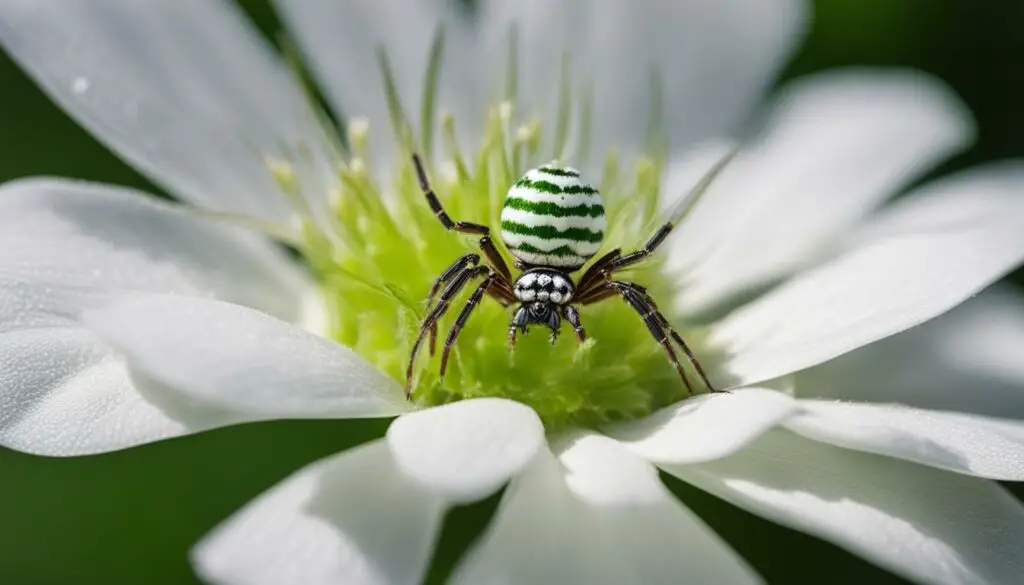
White spiders have long been associated with good luck in various cultures and traditions. In Japan, the sight of a white spider is believed to bring good fortune, while in certain Native American tribes, white spiders are considered to be spiritual messengers.
Some people even believe that finding a white spider in your home is a sign of financial prosperity and that it will bring good luck to your household.
However, not all superstitions surrounding white spiders are positive. In some areas of Europe, encountering a white spider is believed to be a bad omen, signaling impending death or illness.
Despite these conflicting beliefs, many people continue to hold onto the idea that white spiders are a symbol of good luck and fortune.
White Spider Superstitions From Around the World
Let’s take a closer look at the different beliefs people have regarding white spiders and their association with good luck:
| Location | Belief |
|---|---|
| Japan | White spiders bring good fortune. |
| Native American tribes | White spiders are spiritual messengers. |
| Europe | White spiders are a bad omen signaling impending death or illness. |
As you can see, different cultures hold vastly different beliefs when it comes to white spiders and their role in bringing good luck.
While it’s important to note that these beliefs are steeped in superstition and folklore, they nevertheless offer a fascinating insight into the human psyche and our relationship with the natural world.
Whether you believe in the luck-bringing properties of white spiders or not, there’s no denying that these creatures are striking and captivating to behold.
Debunking White Spider Superstitions
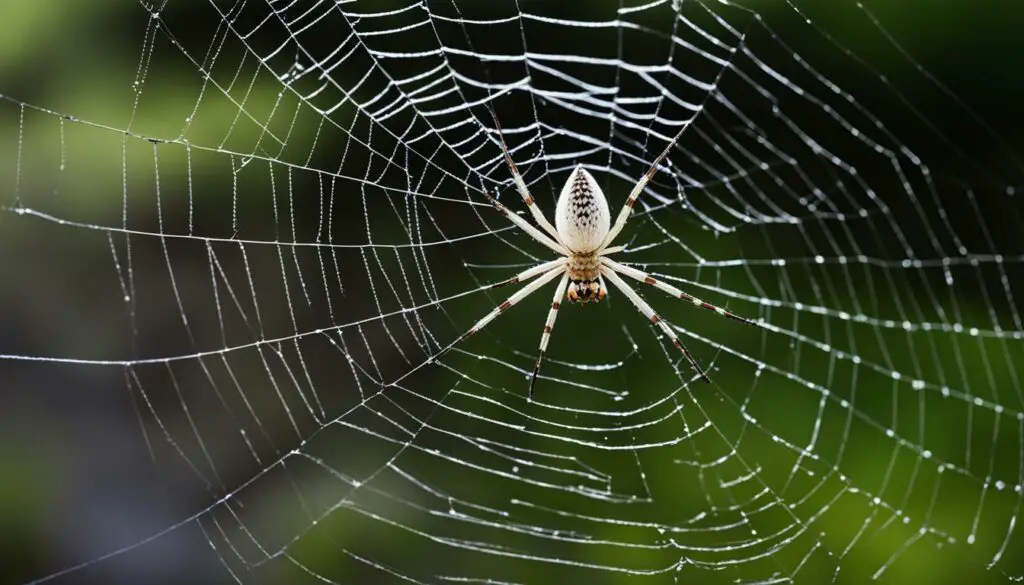
While many people believe that white spiders bring good luck, others dismiss such notions as mere superstition. Let’s take a closer look at some of the common myths surrounding white spiders and their supposed magical properties.
Myth #1: White spiders bring good luck
There is no scientific evidence to suggest that white spiders are any luckier than any other spider. While some cultures do associate white spiders with fortune and prosperity, this is largely based on superstition rather than fact.
Myth #2: White spiders are harmless
While it is true that many white spiders are not venomous and pose no threat to humans, this is not always the case. Some species of white spiders, such as the white widow spider or the white-tailed spider, can be dangerous if provoked or threatened.
Myth #3: All white spiders are the same
White spiders come in many different shapes, sizes, and species. Assuming that all white spiders are the same is simply not accurate. Each species of spider has its own unique characteristics and behaviors, and it’s important to understand the differences between them.
Myth #4: Killing a white spider brings bad luck
There is no evidence to suggest that killing a white spider will bring any sort of bad luck. This is simply another common superstition that has no basis in reality.
Overall, it’s important to approach superstitions about white spiders (and any other creature, for that matter) with a critical and informed mindset. While these beliefs may be deeply ingrained in certain cultures, it’s important to separate fact from fiction and not let these myths dictate our actions.
White Spiders and Fear

While some people view white spiders as symbols of good luck, others may experience fear or anxiety when encountering them. This is not surprising, given the numerous superstitions and beliefs around spiders in general, and white spiders in particular. In fact, arachnophobia, or the fear of spiders, is one of the most common phobias in the world.
Spider superstitions and folklore often portray these creatures as ominous or dangerous, associating them with dark forces or malevolent spirits. For example, in some cultures, spiders are thought to be harbingers of death, while in others, they are seen as witches’ familiars or companions. The fear of spiders may also stem from their perceived ability to inject venom or cause harm, even though most spider species are not venomous or dangerous to humans.
White spiders, in particular, may evoke fear due to their unusual appearance. While some people may find their white coloration striking or beautiful, others may associate it with ghostly entities or supernatural events. Moreover, white spiders may be mistaken for other more dangerous or venomous species, such as the white widow spider or the sac spider.
Despite this fear and anxiety, it’s important to remember that white spiders, like all spiders, play an important ecological role in controlling insect populations and maintaining the balance of ecosystems. While caution is always advisable when encountering any wild animal or creature, there is no need to fear white spiders simply because of their color or appearance.
Spider Mythology and Fear
The fear of spiders has been documented throughout history, appearing in myths and legends from different cultures and societies. For example, the Greek myth of Arachne tells the story of a mortal weaver who dared to rival the goddess Athena and was transformed into a spider as punishment. In Norse mythology, the giant spider Loki was depicted as a trickster and shape-shifter, capable of assuming human form to deceive and harm others.
These stories and others like them have contributed to the longstanding association between spiders and fear, reinforcing negative attitudes towards these creatures. However, it’s important to recognize that these myths are fictional and do not reflect the reality of spiders or their behavior. By learning more about spiders and their ecological role, we can appreciate these fascinating creatures and overcome our irrational fears.
White Spiders in Contemporary Culture
Despite their ancient symbolism and spooky reputation, white spiders continue to fascinate and inspire artists and writers today. From literature to film, these creatures have made their mark on contemporary culture in various ways.
White Spiders in Literature
One of the most famous examples of white spider imagery in literature is E.B. White’s beloved children’s book, Charlotte’s Web. The titular character is a friendly barn spider who saves the life of a young pig named Wilbur. While Charlotte is not specifically depicted as white, her species, the common barn spider, is usually light in color and may be considered a “white spider” by some.
Other literary works that feature white spiders include the horror novel The Eight by Katherine Neville, in which a white spider plays a significant role in the story’s plot, and the science fiction novel The Diamond Age by Neal Stephenson, in which a character imagines a futuristic nanobot shaped like a “little white spider”.
White Spiders in Film and Television
White spider imagery has appeared in several popular films and television shows over the years. In the Marvel universe, the character Venom is often depicted with a white spider symbol on his chest. The white spider also has a prominent role in the 2018 horror film Hereditary, in which it is used to symbolize death and destruction.
Other notable examples of white spider imagery in media include the television show Stranger Things, in which a white spider-like creature terrorizes the main characters, and the video game series The Legend of Zelda, in which white spider enemies known as Skulltulas make appearances in several installments.
White Spiders in Art
White spiders have also captured the attention of artists throughout history. One famous example is the painting The Great Red Dragon and the Woman Clothed with the Sun by William Blake, which depicts a white spider in the foreground of the surreal scene.
Another artist who has incorporated white spider imagery into their work is the contemporary painter Louise LeBourgeois. Her series The Spider and the Tapestries features intricate spiderweb patterns, some of which include small white spiders crawling along the strands.
While white spiders may continue to evoke fear and superstition in some, their enduring presence in various forms of media demonstrates their lasting impact on our collective imagination.
Conclusion
The fascinating world of white spiders and their potential association with good luck, symbolism, and superstitions has captured our attention throughout this article. While there is no concrete evidence to prove or disprove whether white spiders bring luck, their cultural significance and mythological importance cannot be ignored.
We have explored the broader realm of spider superstitions and folklore, highlighting the specific role white spiders play in various traditions and beliefs. From their symbolic meaning to their presence in mythological stories, white spiders have left a significant mark in human imagination.
What Does It All Mean?
While some people consider white spiders to be fortunate creatures, others are skeptical of their potential luck-bringing abilities. But what matters is the personal significance that these creatures may hold for each individual. For some, white spiders may represent a spiritual connection or a reminder of their loved ones, while for others, they may evoke feelings of fear or anxiety.
Ultimately, the meaning of white spiders is subjective and depends on one’s personal beliefs and experiences. Whether you choose to embrace the potential luck that they may bring or dismiss their significance as mere superstition, one thing is certain: the fascinating world of white spiders will continue to intrigue and captivate us for generations to come.
Thank you for joining us on this journey of unraveling the mystery of white spiders and their potential as bringers of good luck. We hope you have found this article informative and enjoyable.
FAQ
Are white spiders considered good luck?
While some superstitions suggest that white spiders bring good luck, beliefs about luck can vary across cultures and individuals. It ultimately depends on personal beliefs and interpretations.
What is the symbolism of white spiders?
White spiders hold symbolic meaning in different cultures and spiritual practices. They are often associated with luck, purity, and spiritual guidance.
Do white spiders have any significance in folklore?
Yes, white spiders can be found in various folklore stories and myths. They are often depicted as lucky creatures or symbols of protection.
Are there any mythological stories featuring white spiders?
Yes, white spiders are sometimes mentioned in mythological tales. They are often associated with luck, fortune, and the weaving of destiny.
Do white spiders really bring good luck?
The belief in white spiders as bringers of good luck is subjective and varies among individuals. While some people believe in their auspicious nature, others may not ascribe any special meaning to them.
Are there any scientific explanations for white spider superstitions?
White spider superstitions are rooted in cultural beliefs and traditions rather than scientific evidence. It is important to note that luck and superstitions are often matters of personal interpretation.
Why do some people have a fear of white spiders?
Arachnophobia, or the fear of spiders, can develop due to various factors such as genetics, cultural conditioning, and personal experiences. White spiders, like any other spiders, can trigger fear in individuals with arachnophobia.
How are white spiders represented in contemporary culture?
White spiders continue to inspire artists, writers, and filmmakers. They can be found in literature, art, and media, where they often evoke a sense of mystery and intrigue.
